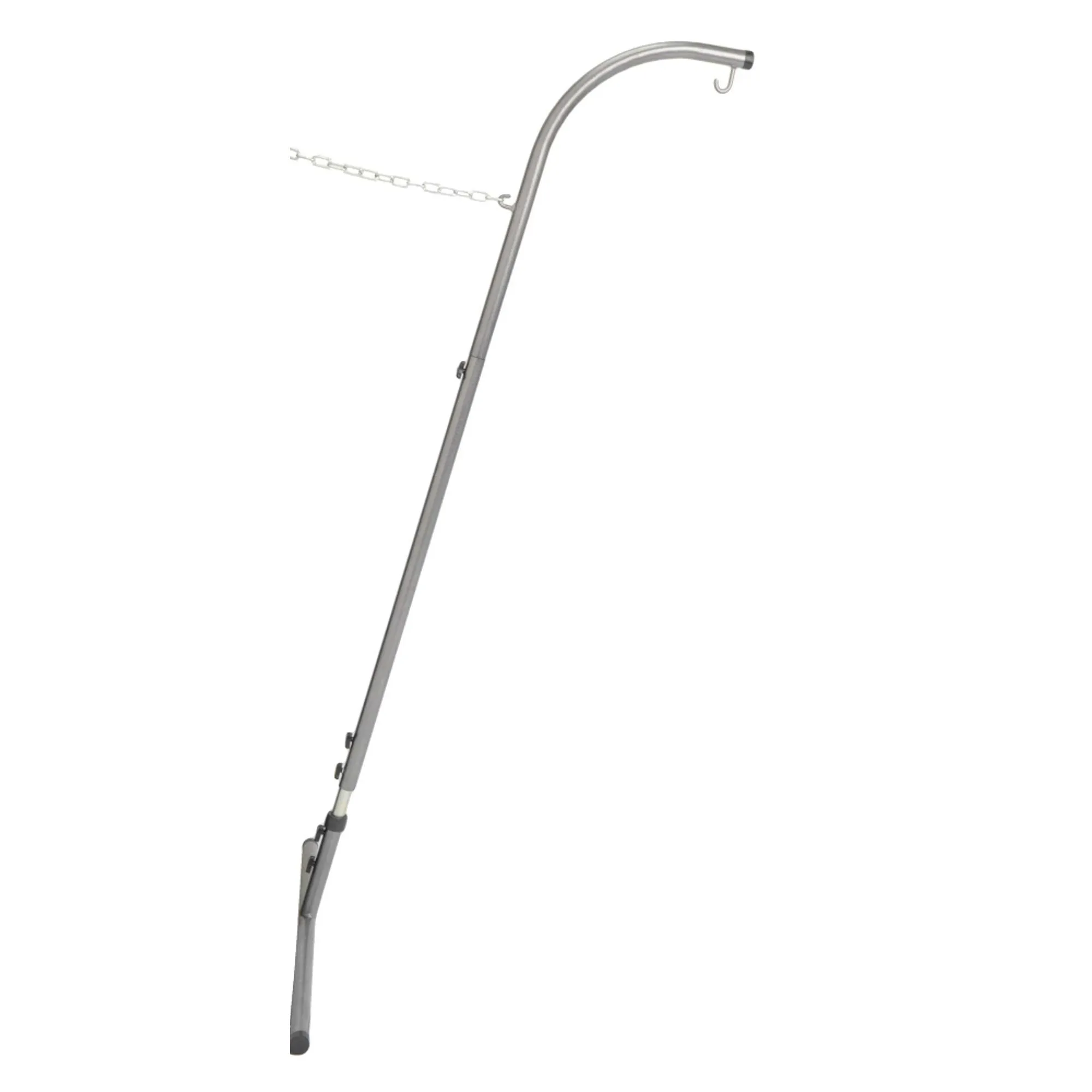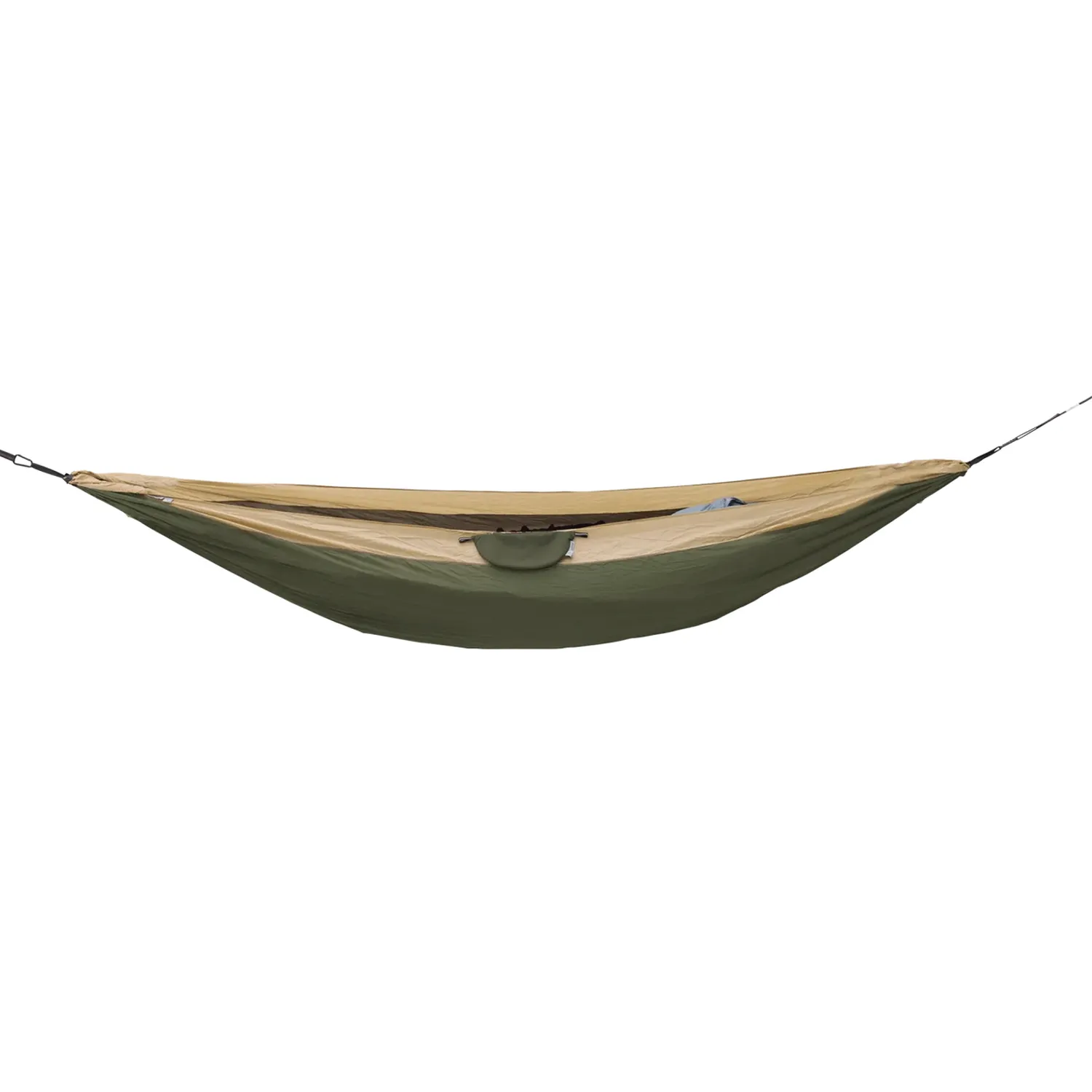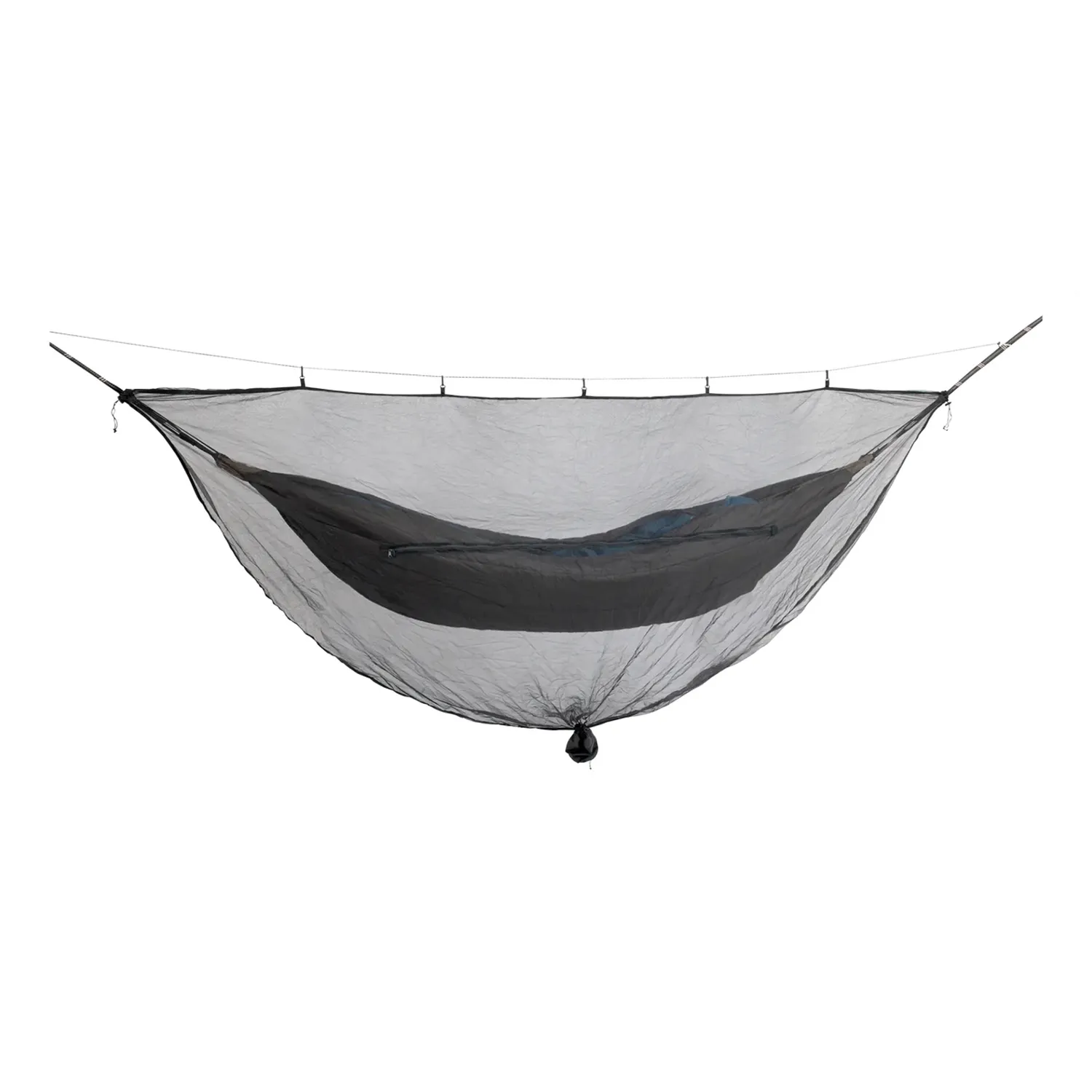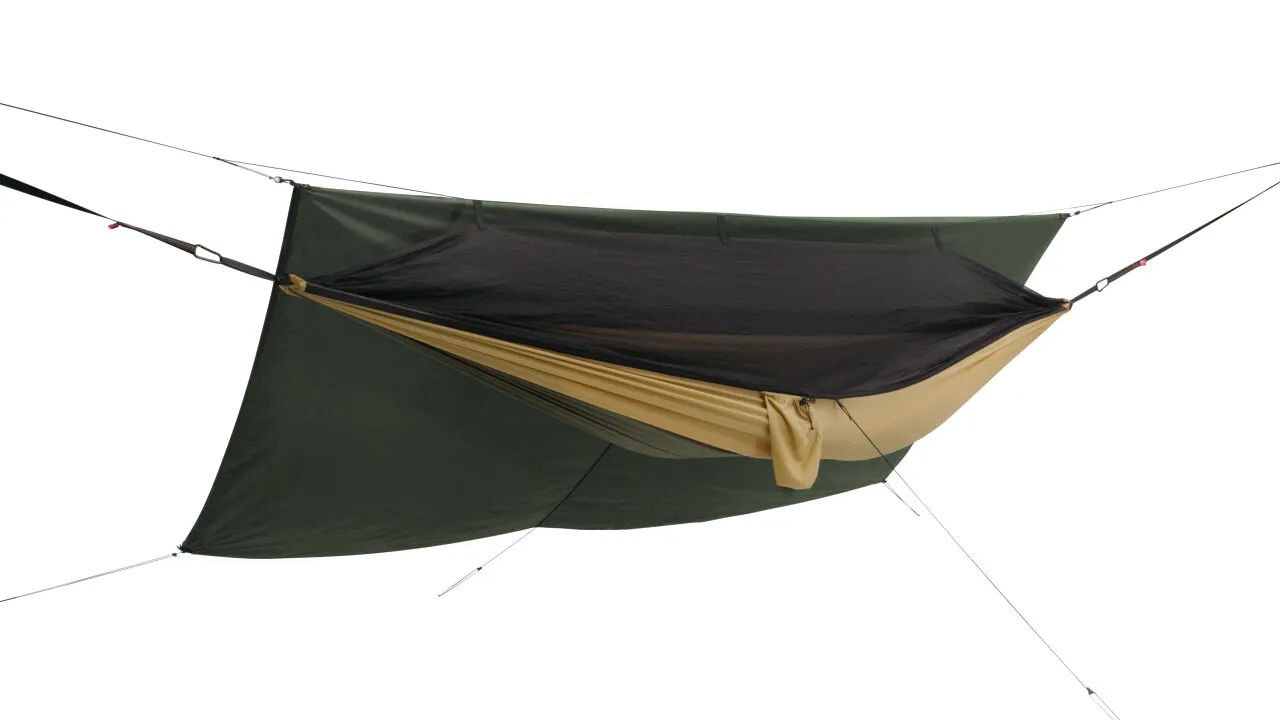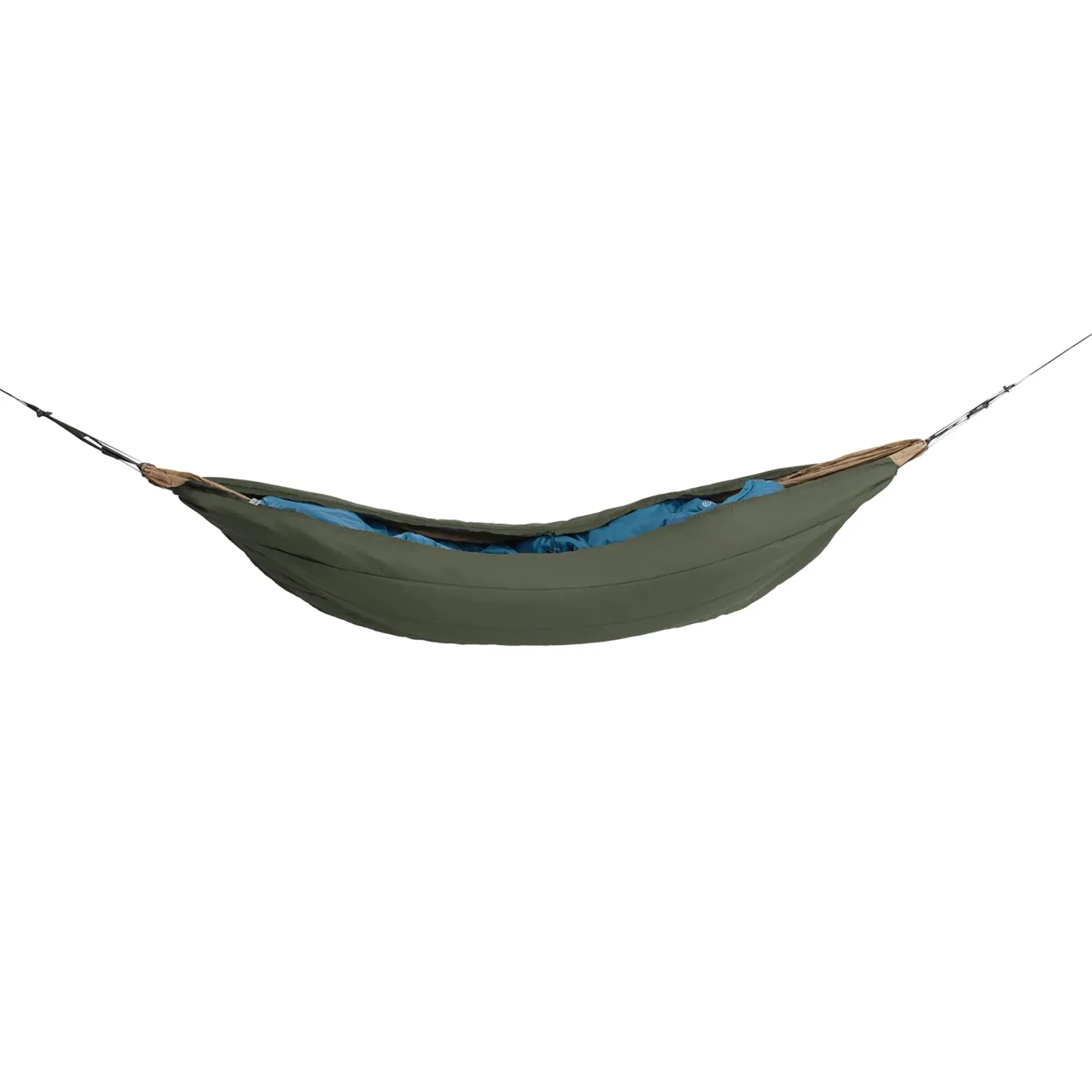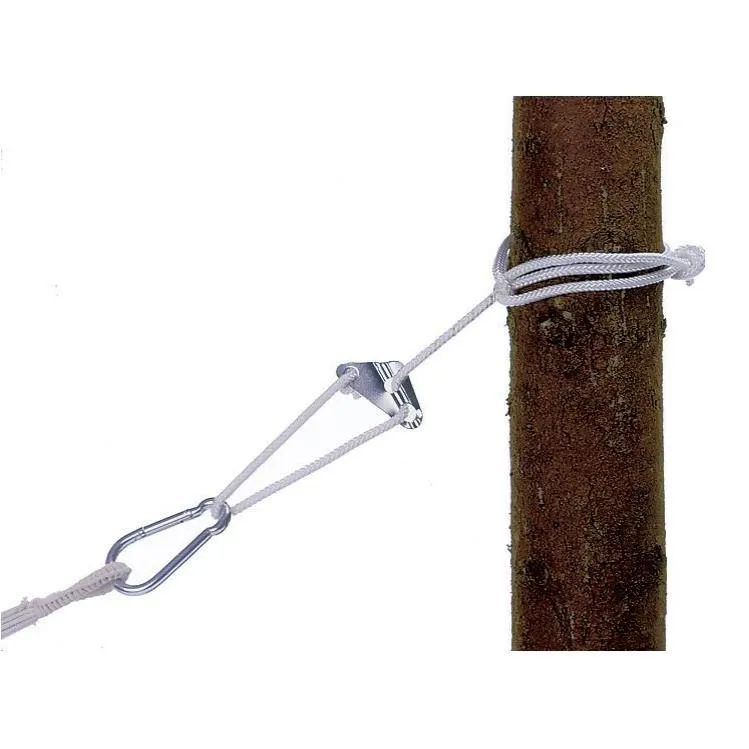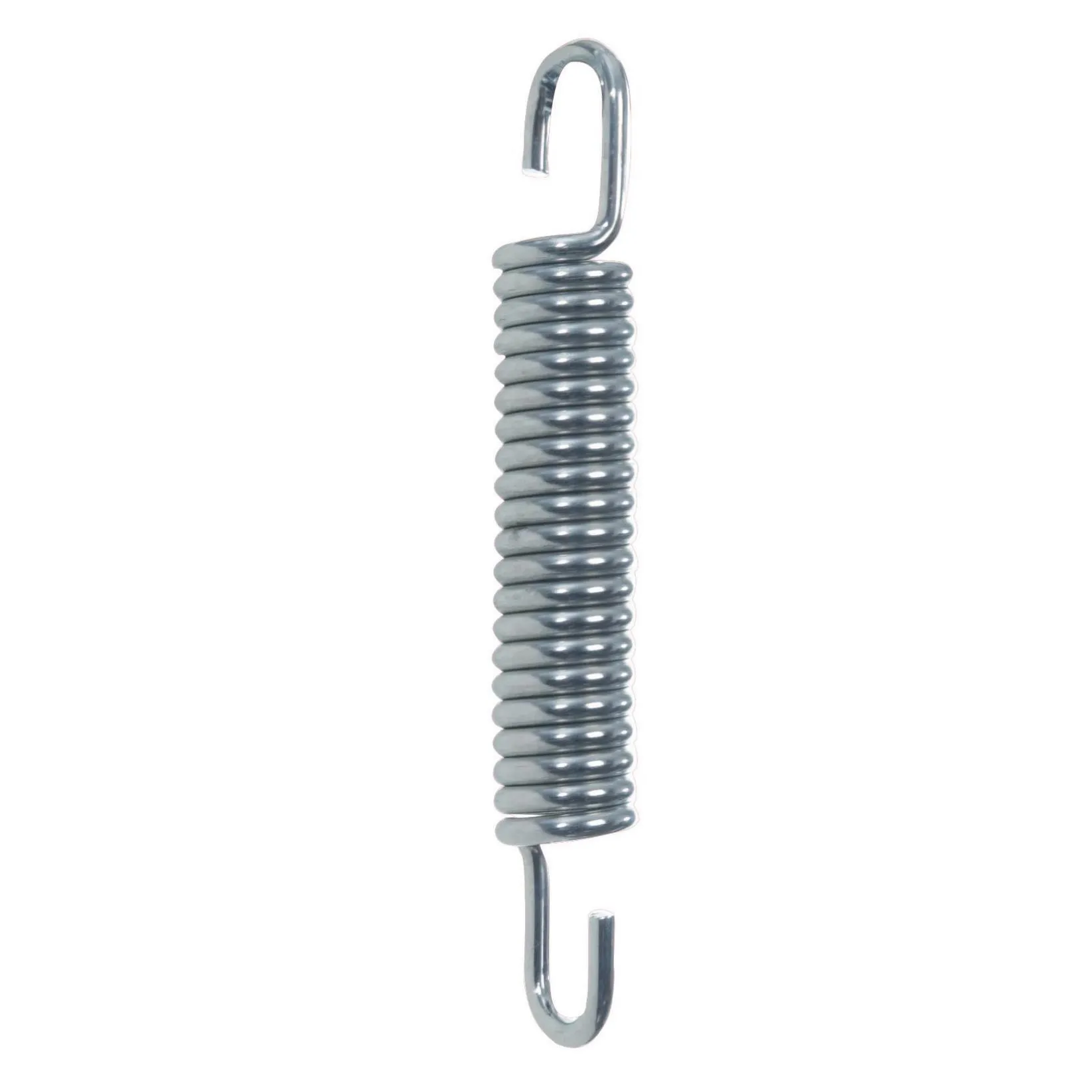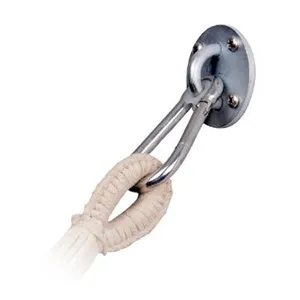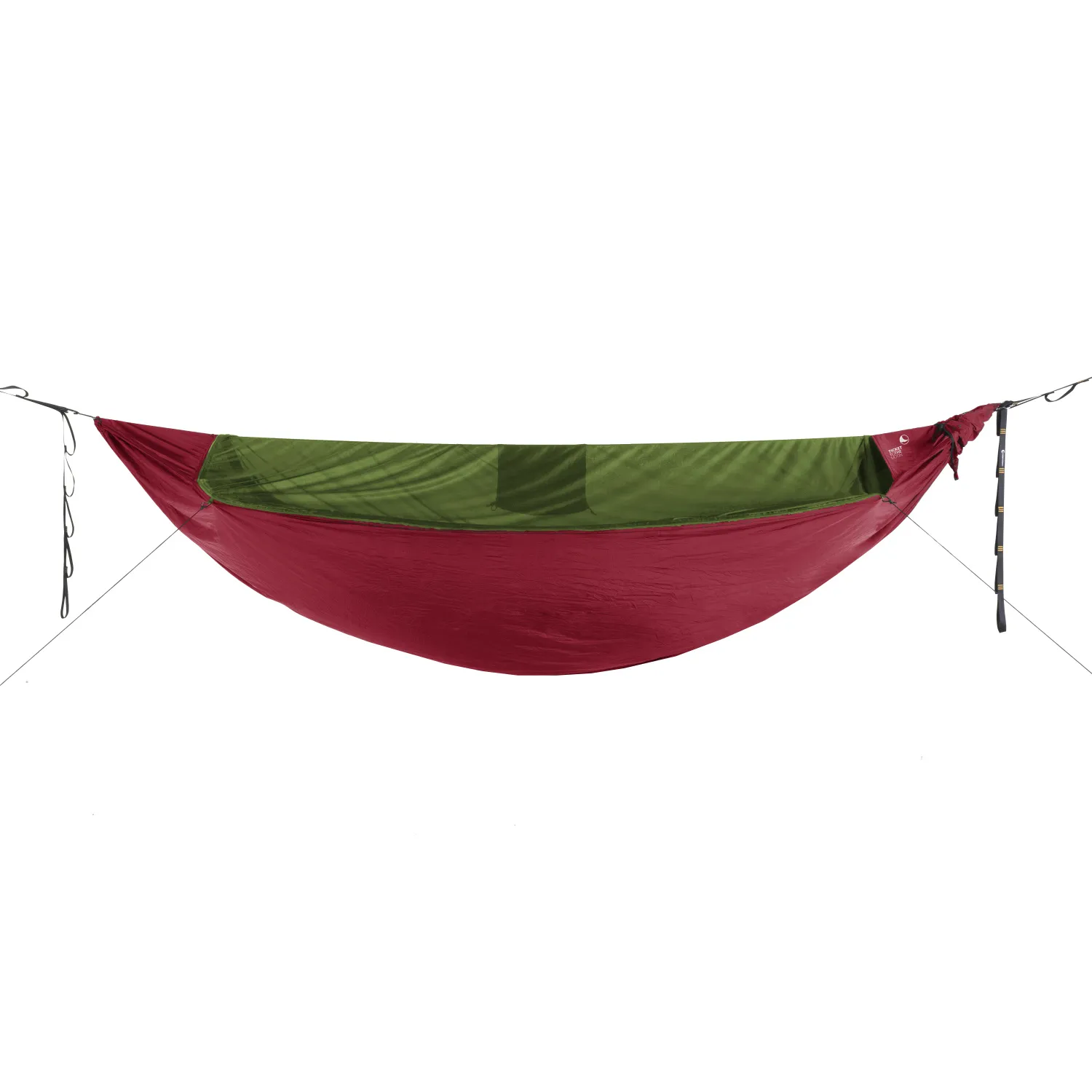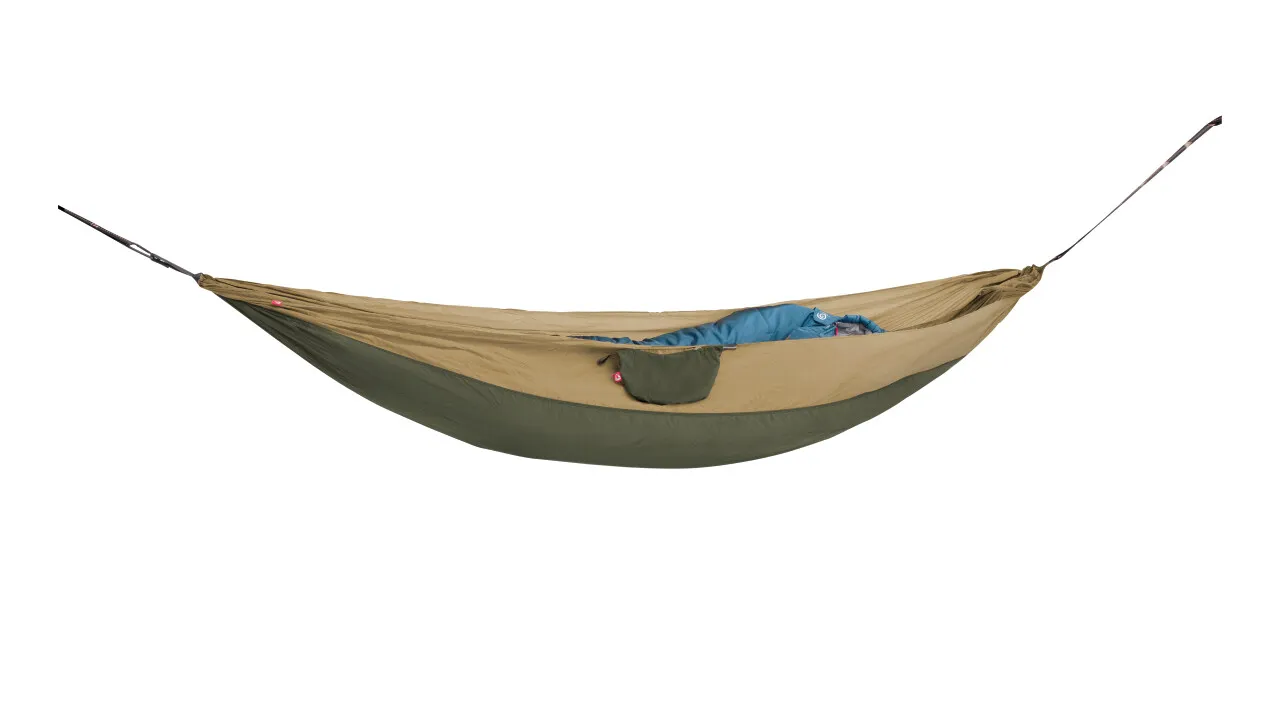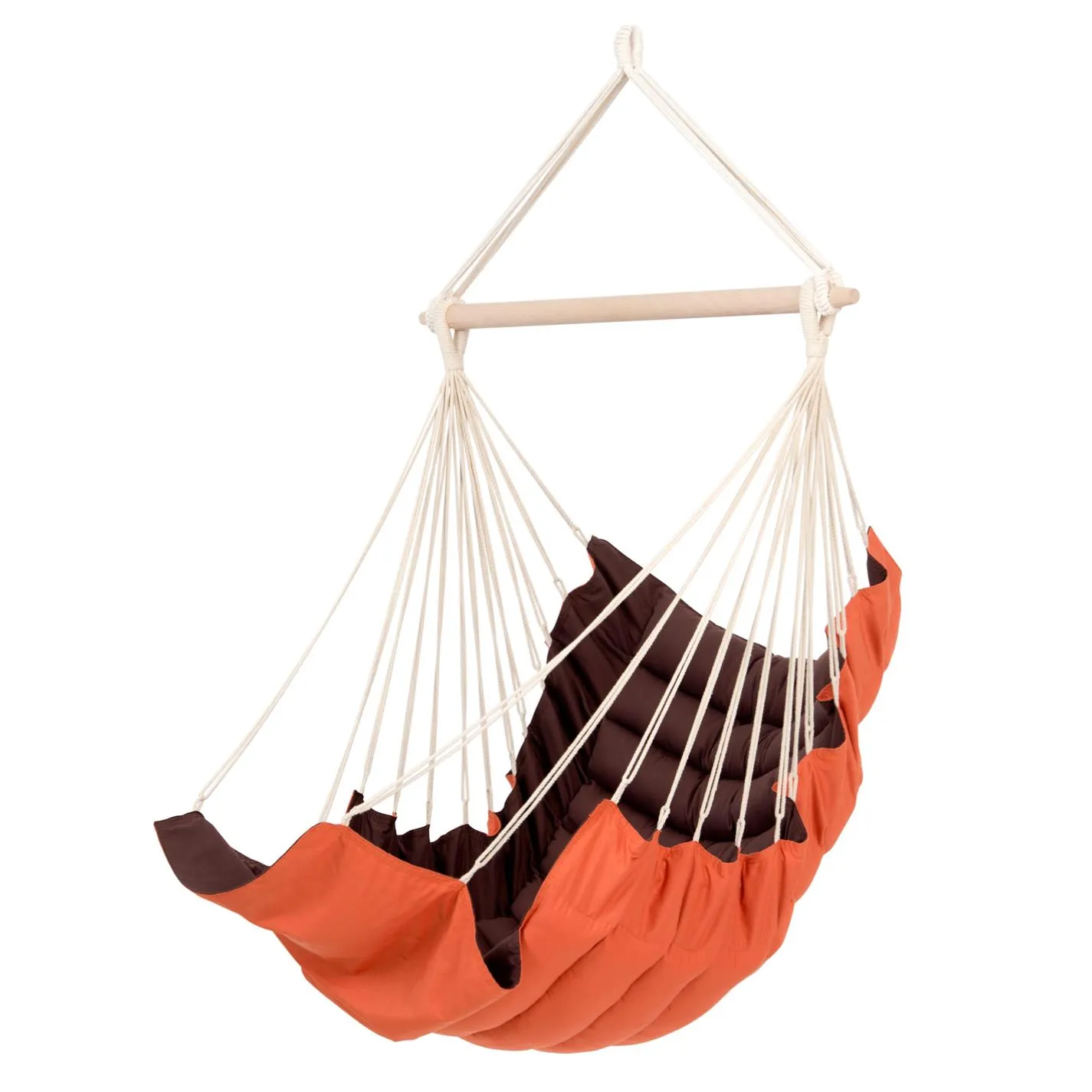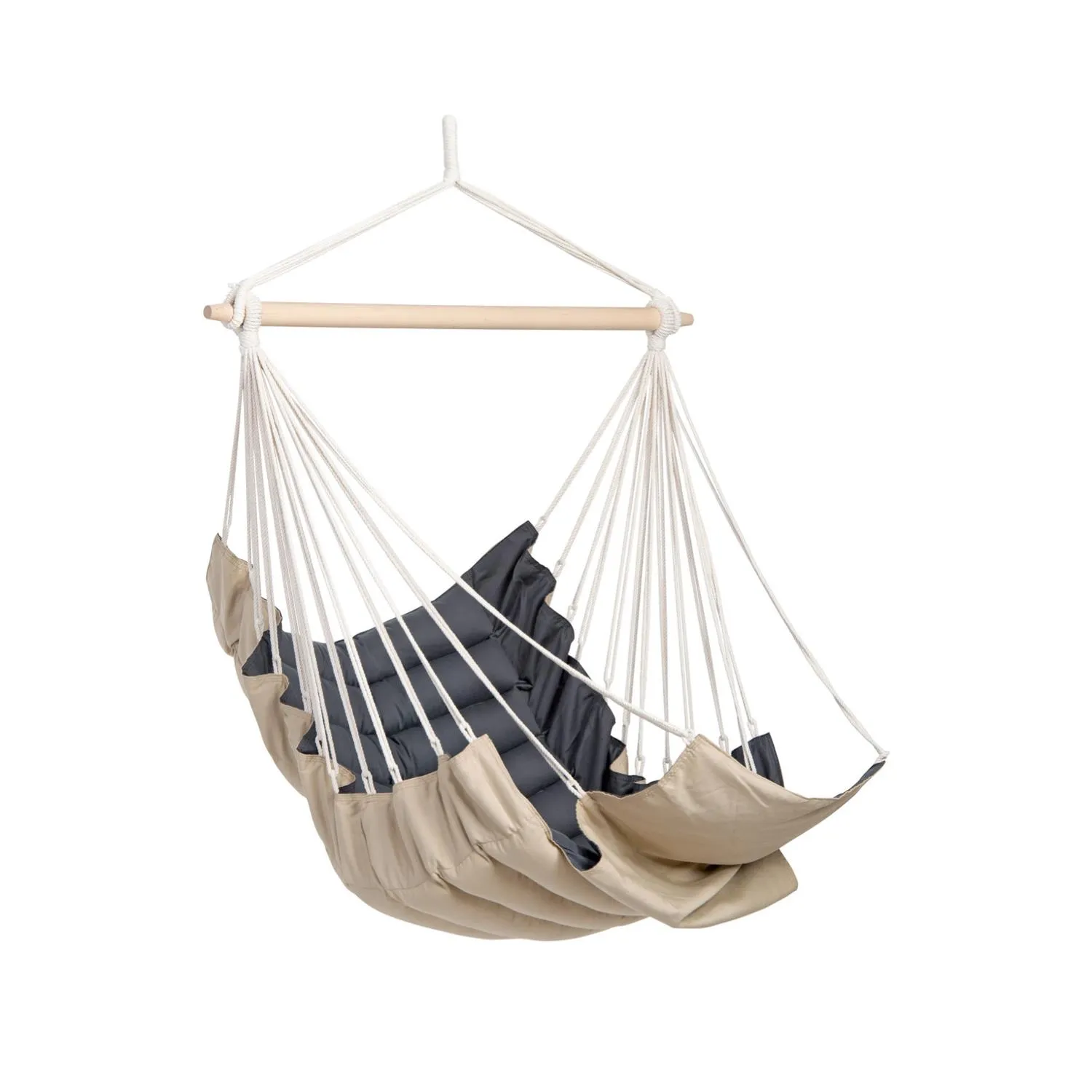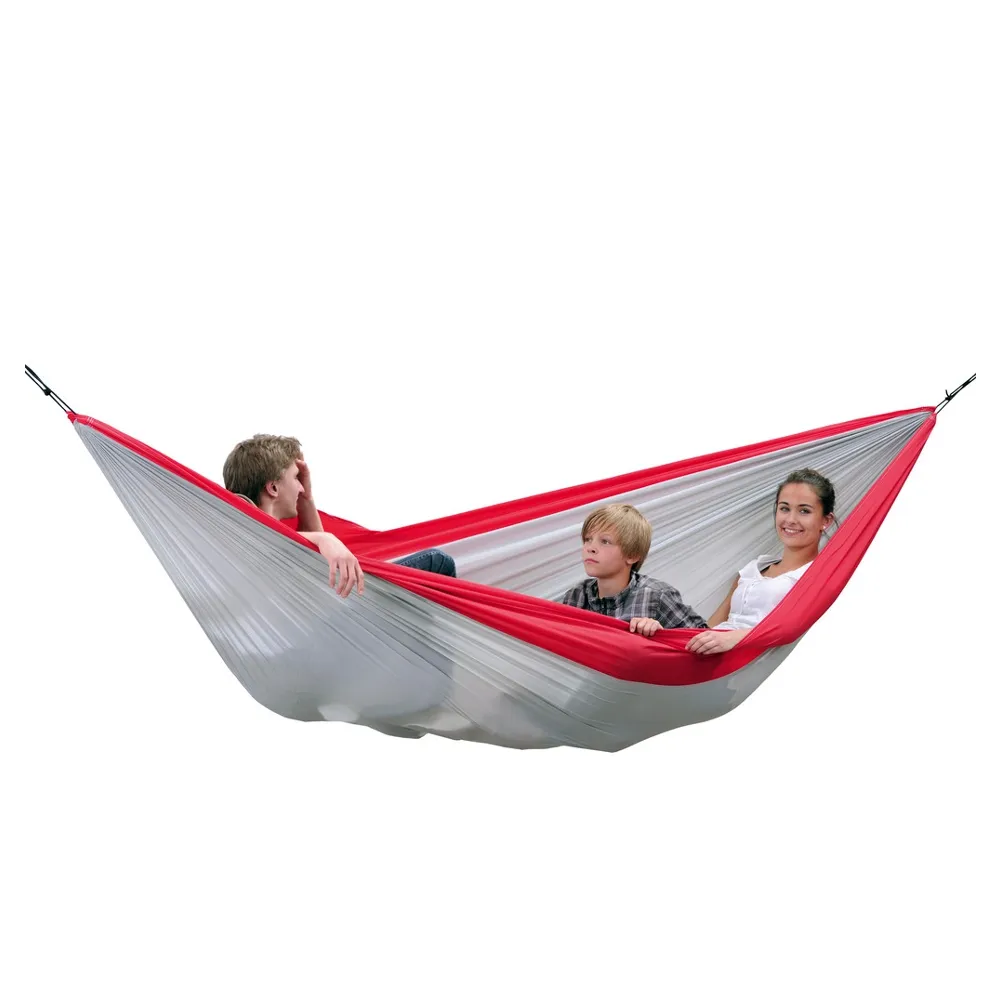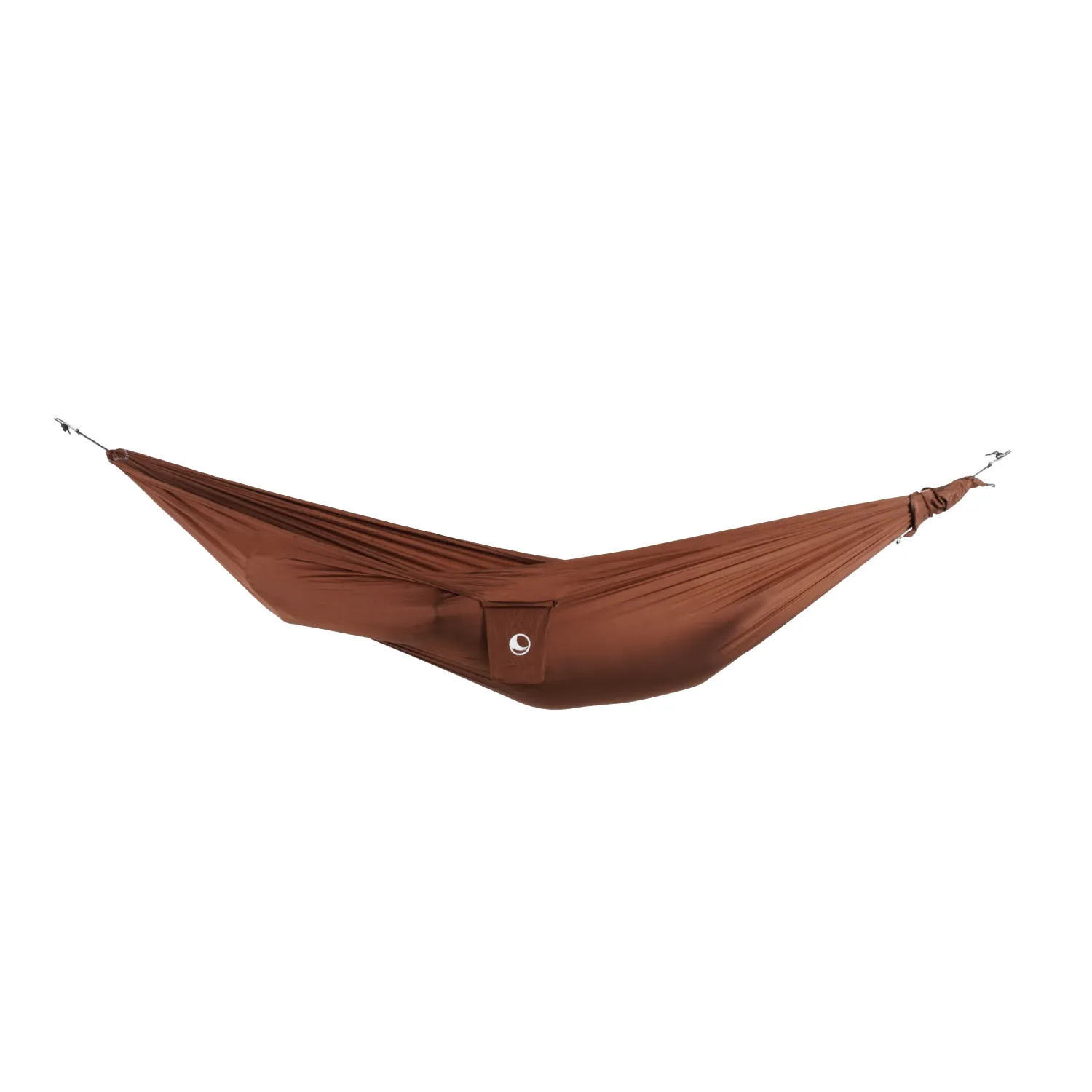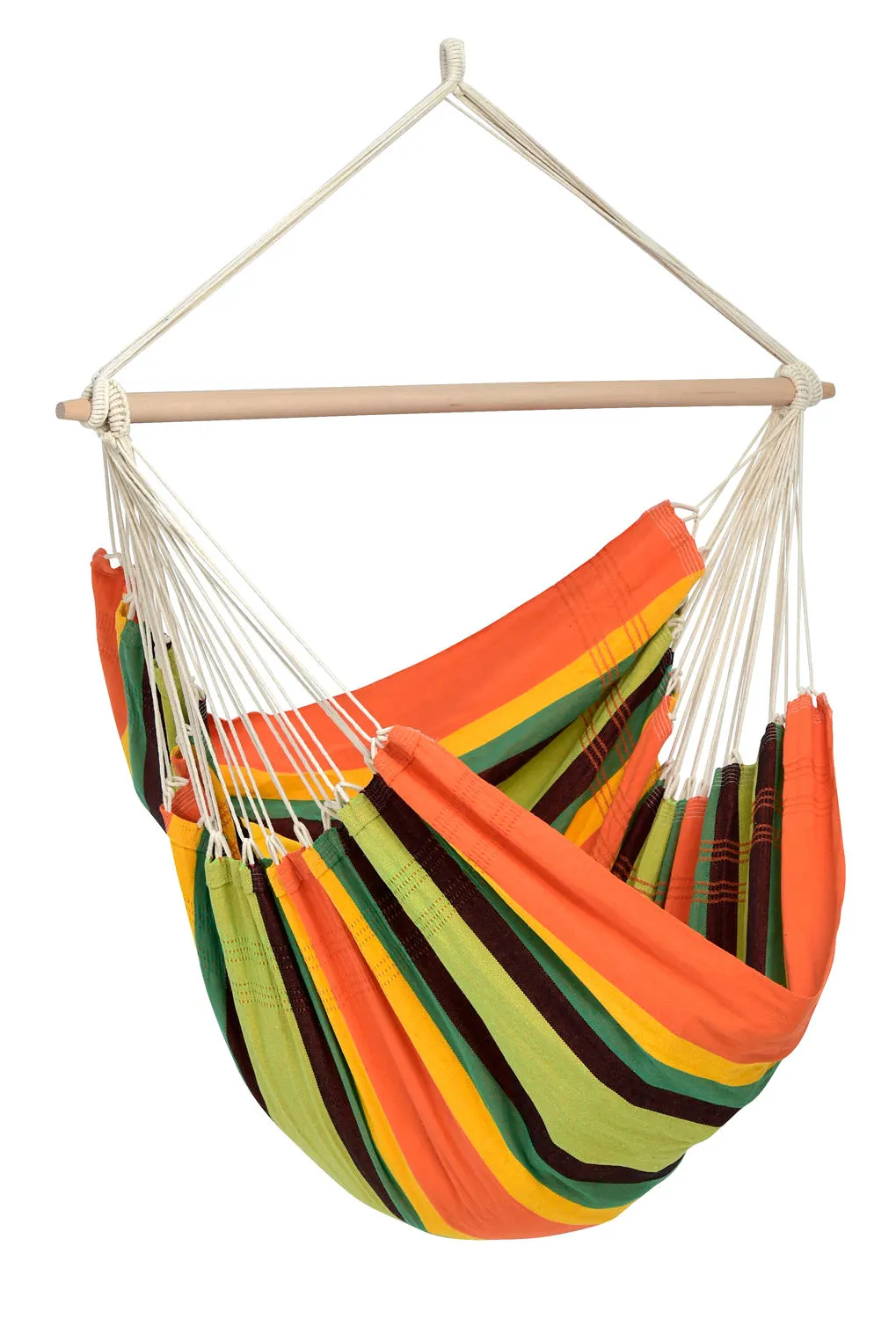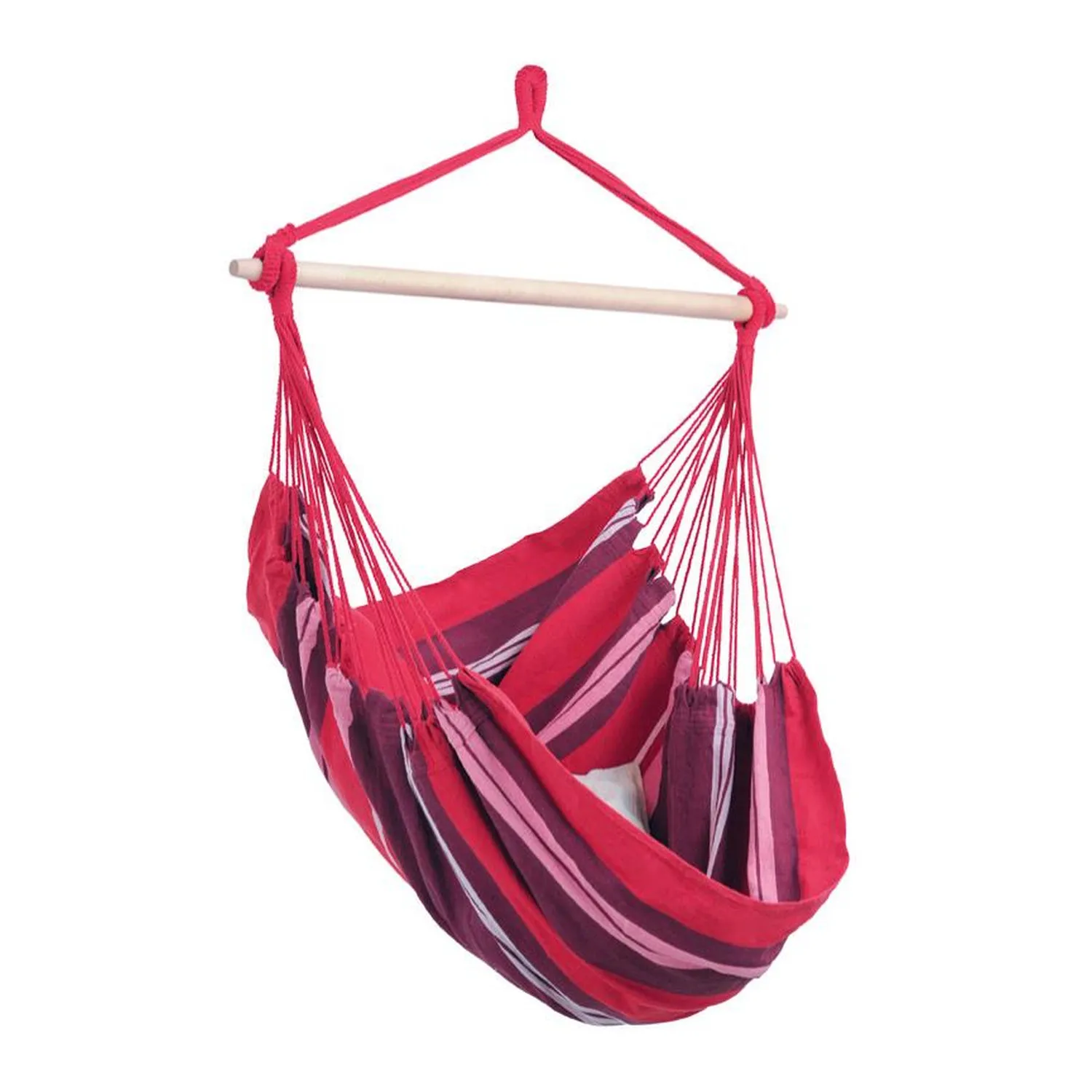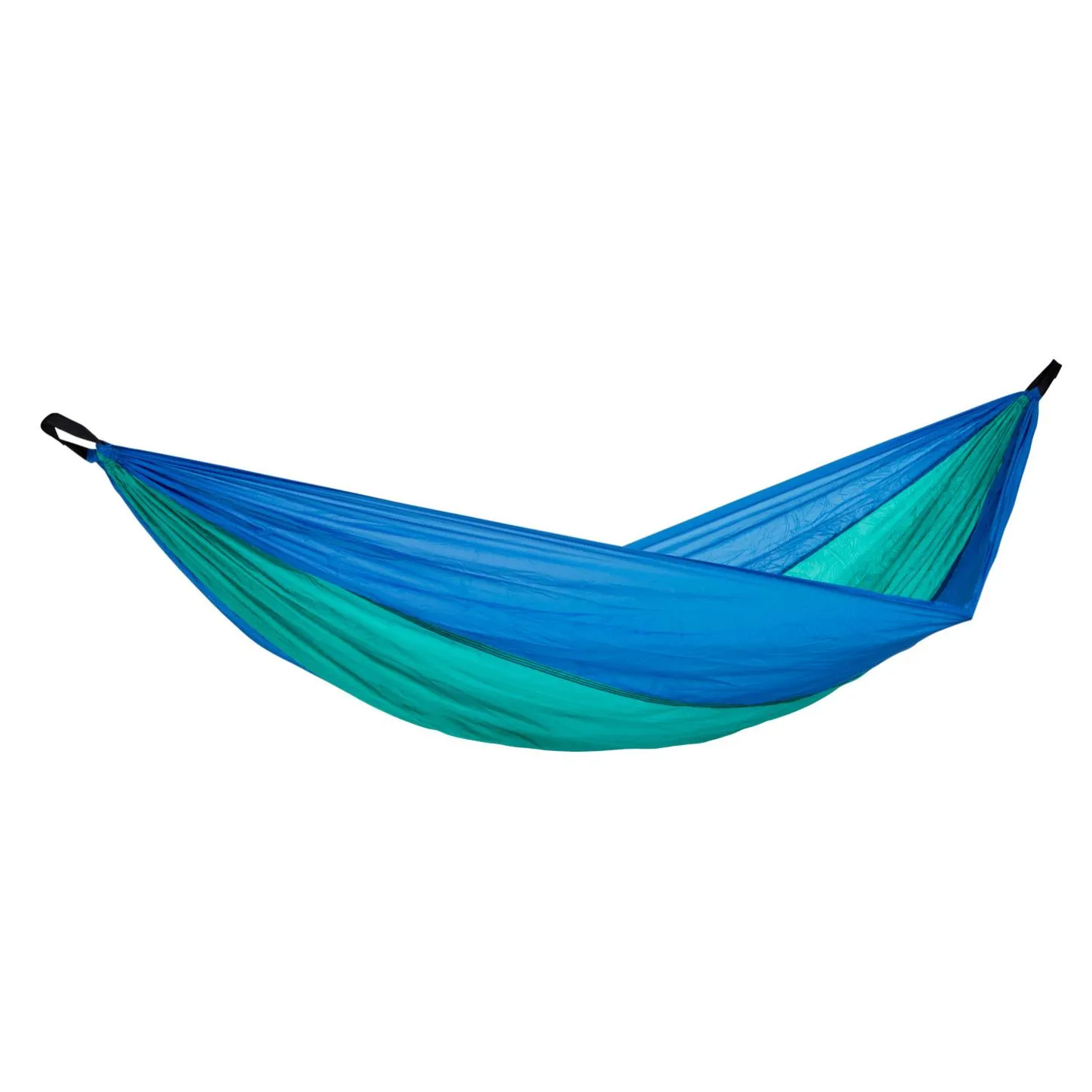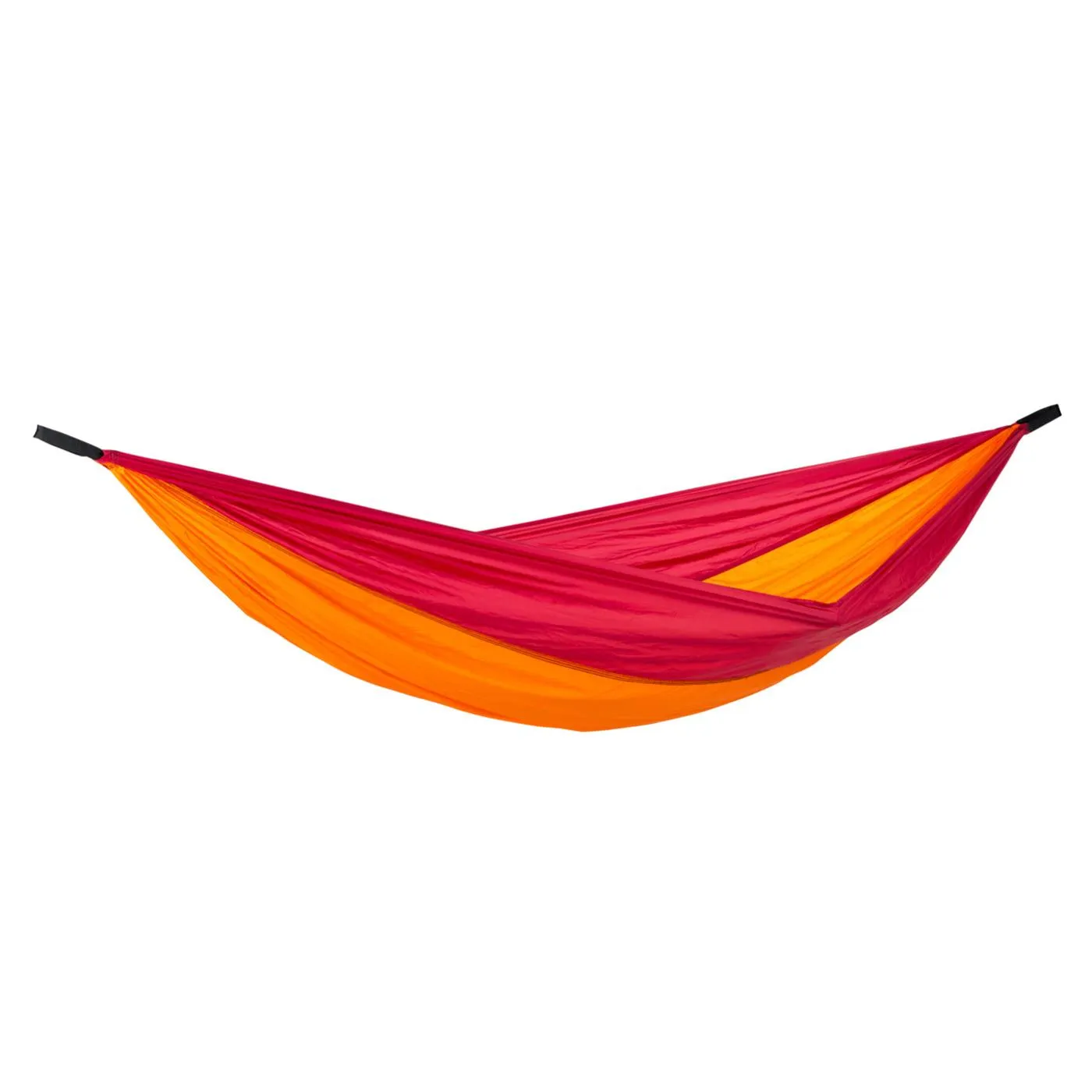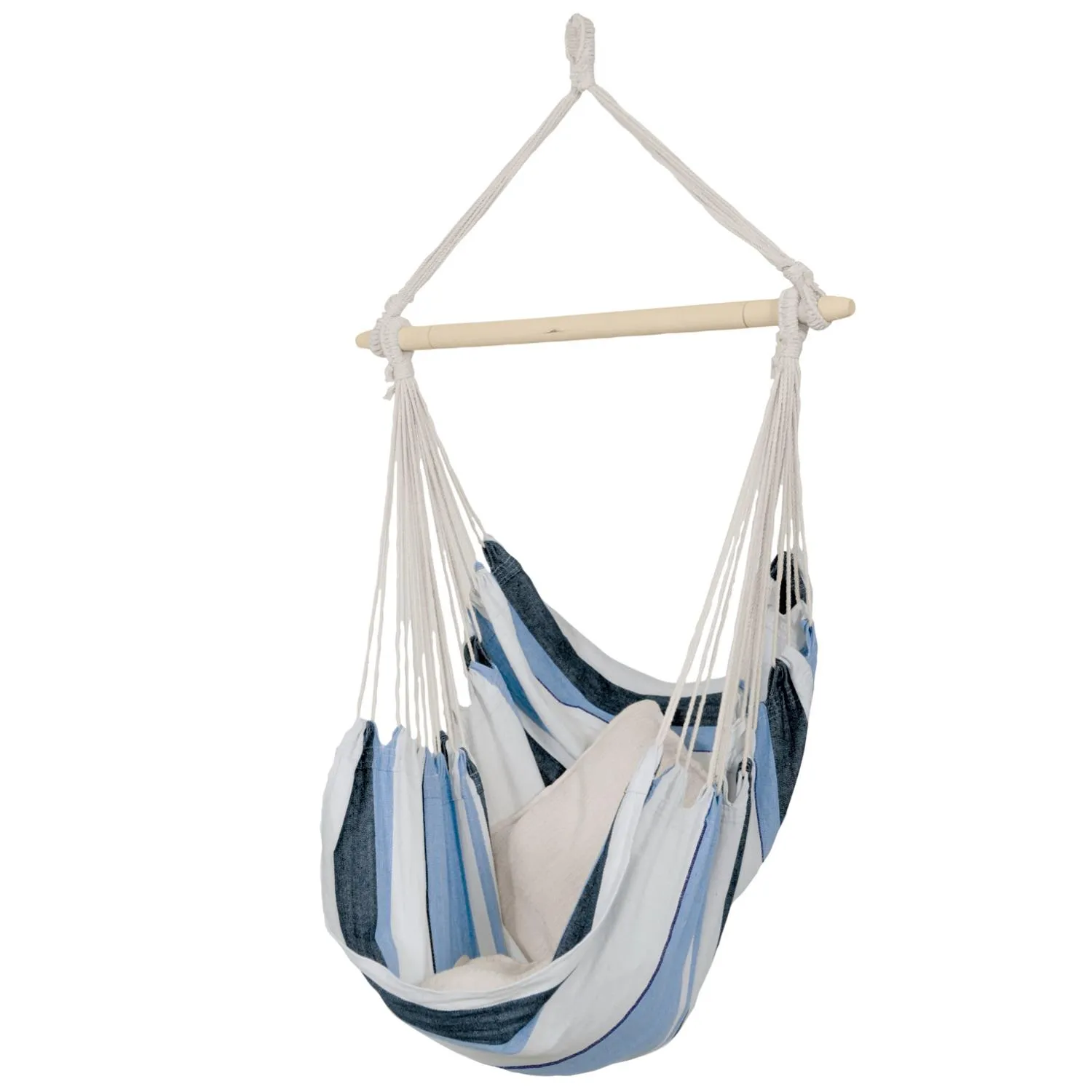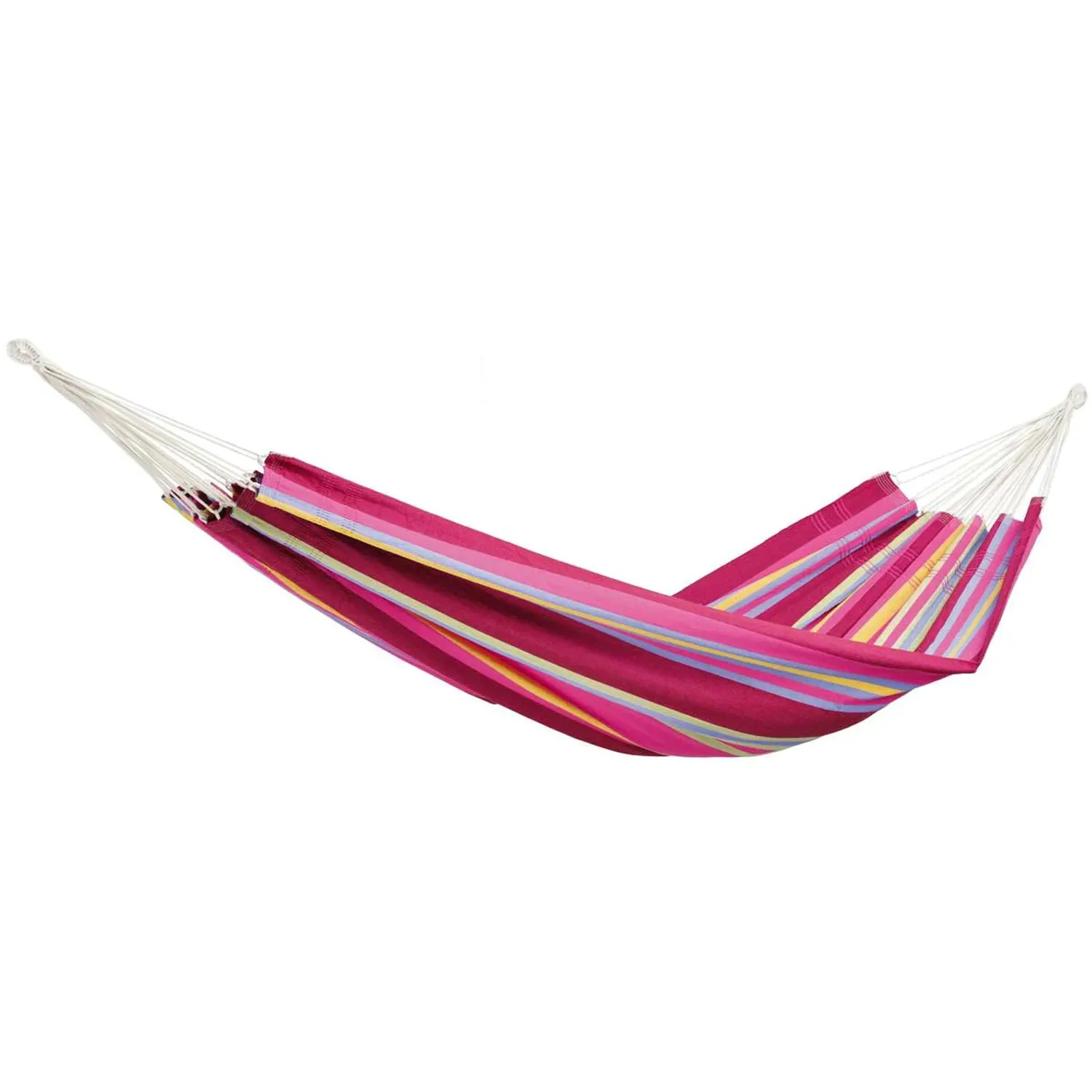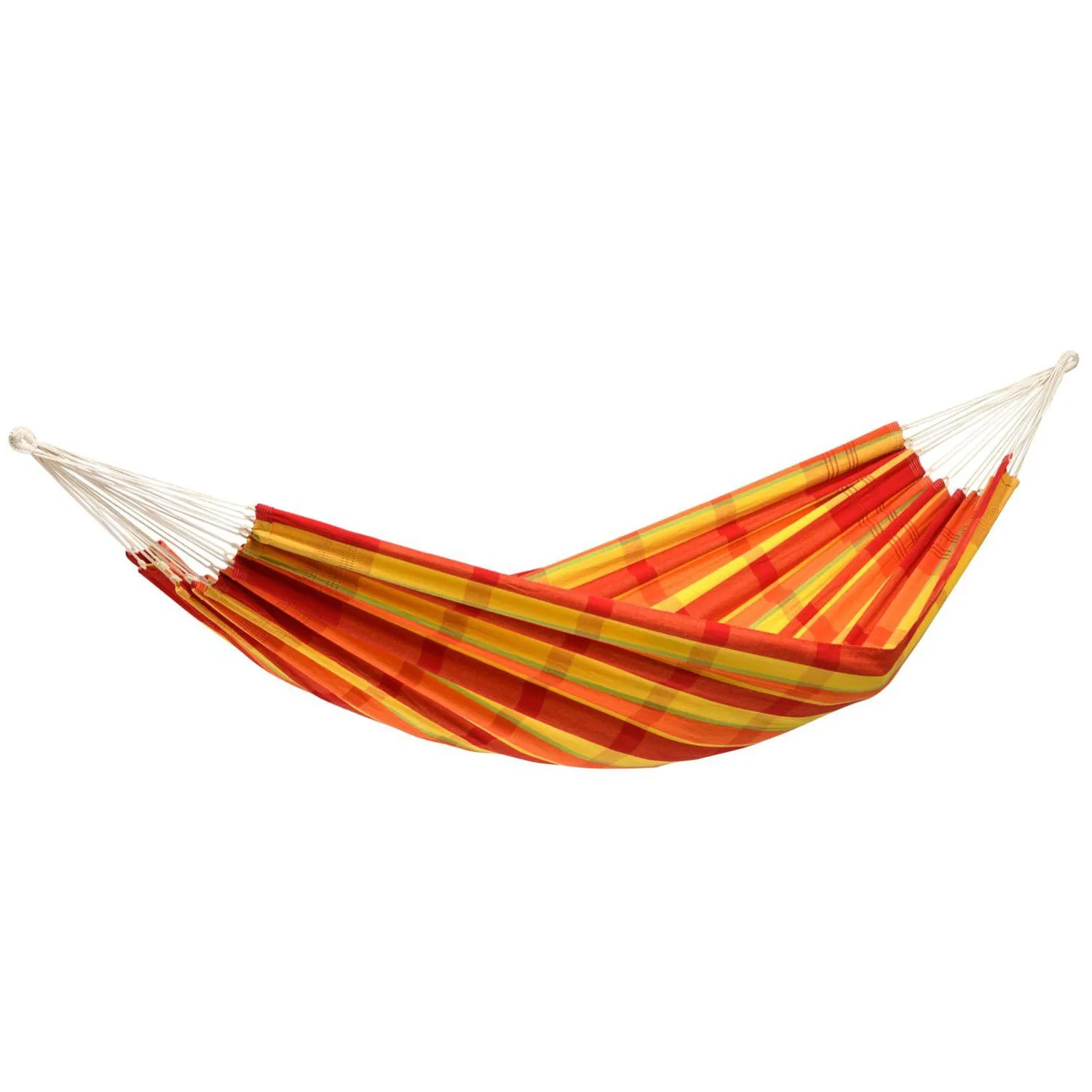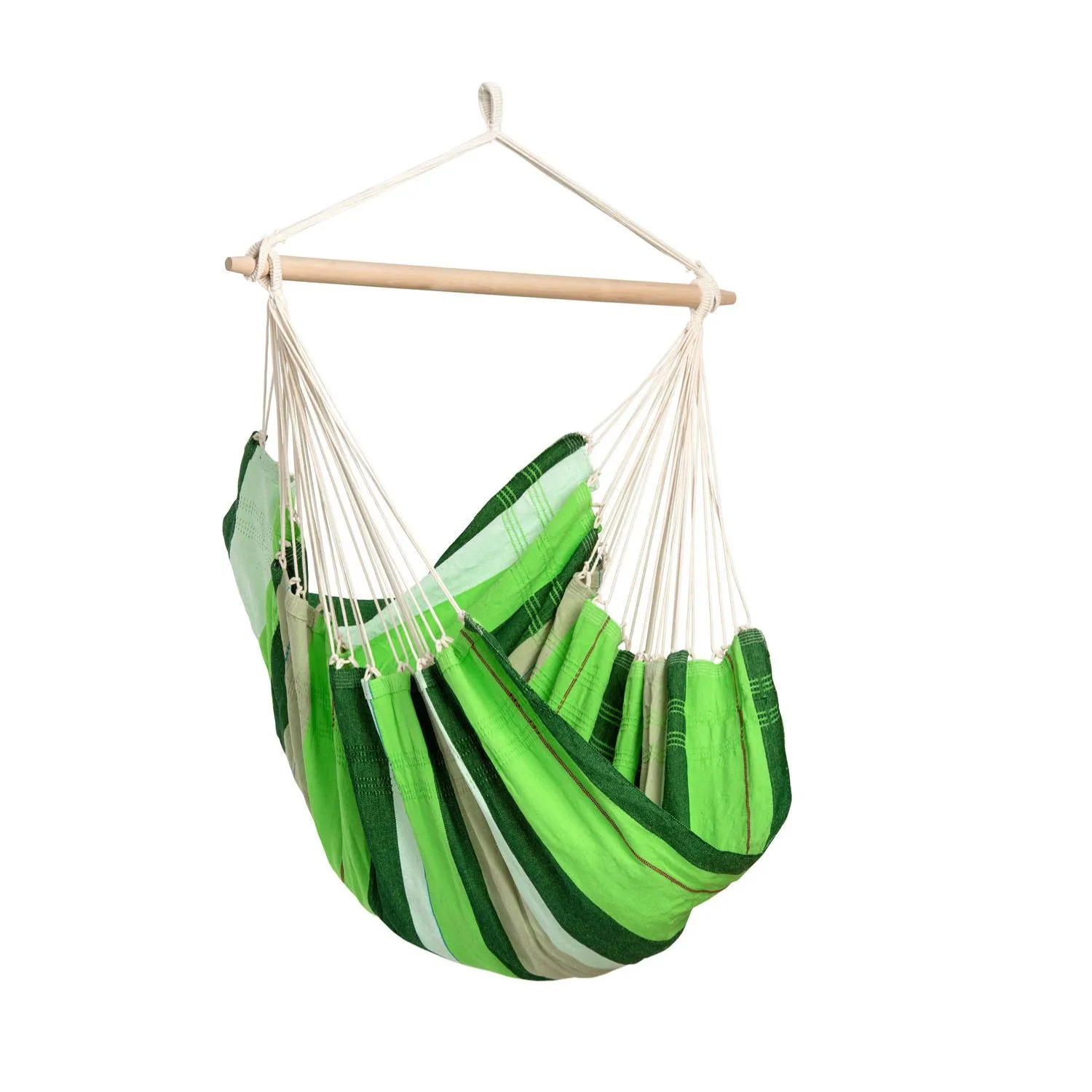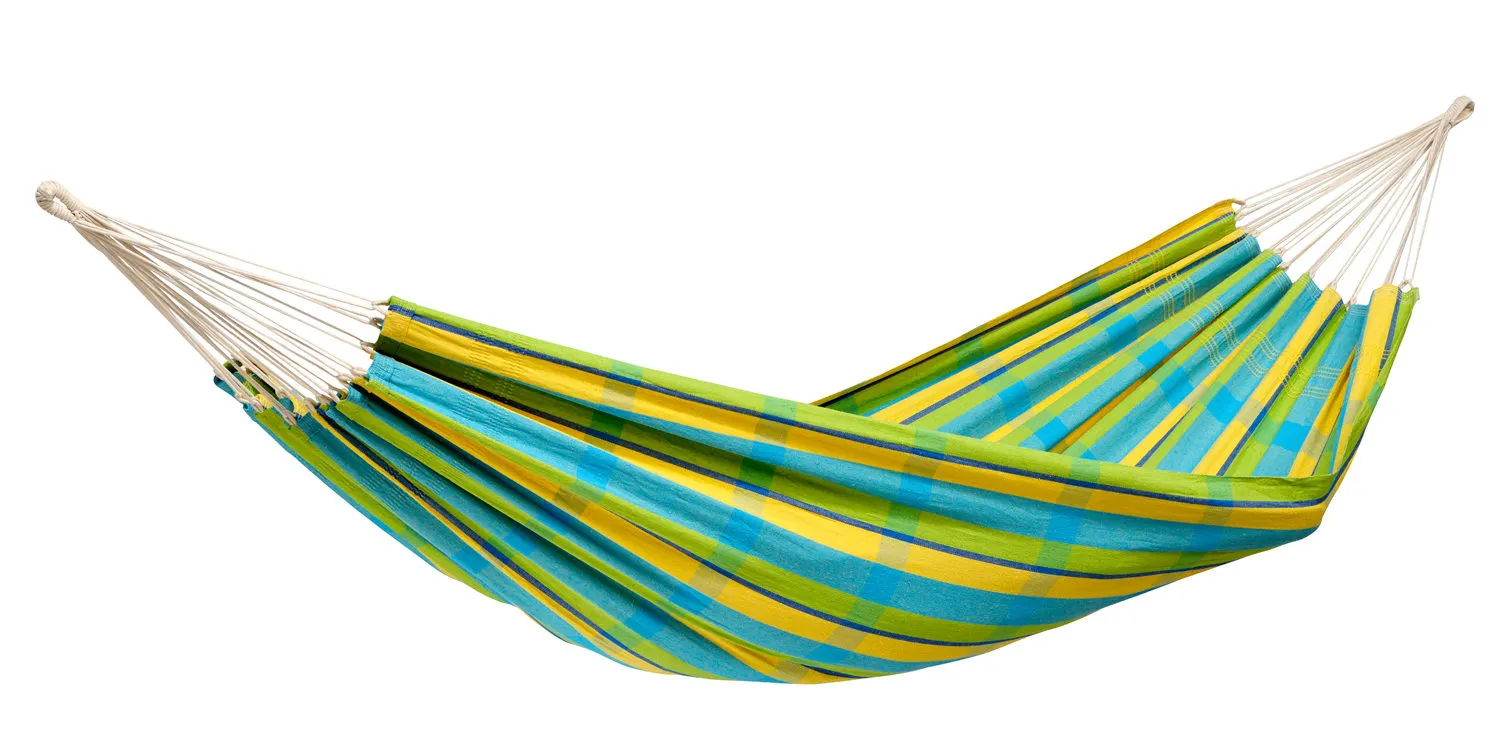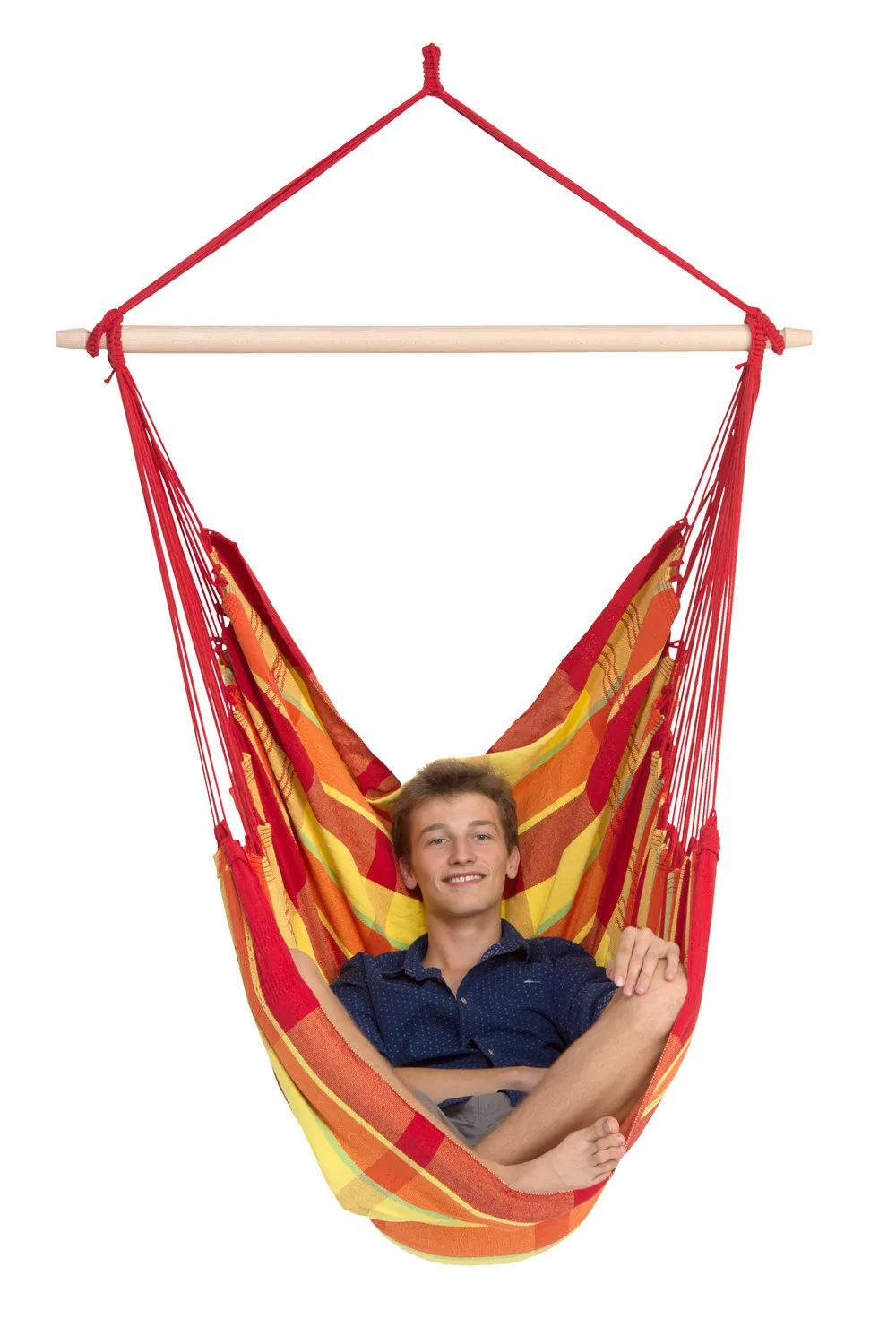Hammocks
Hammocks and hanging chairs
A comfortable place to relax and sleep - outdoors and indoors
Hammocks and hanging chairs stand for pure relaxation. However, they are not only suitable for lazing around, but also as a space-saving alternative to a tent or as a place to sleep when camping. You can set them up almost anywhere. Plus: at home in the garden or in your room, the hanging models create a holiday feeling.
- 9 advantages of hammocks and hanging chairs
- What do you need to consider when buying a hammock or hanging chair?
- Attaching the hammock or hanging chair
- Hammock or hanging chair - who scores how?
- How do I clean a hammock chair or mat?
9 advantages of hammocks and hanging chairs
- You can take them anywhere
- Versatile: for the garden, when camping, as a place to sleep
- Cosy place to relax
- Space-saving alternative to a tent
- Easy to stow away
- Swing to play on
- Creates a holiday feeling at home
- Good for the back
- Therapeutic effect
What do you need to consider when buying a hammock or hanging chair?
-
What material or fabric is the hammock or hanging chair made of?
Hanging chairs or hammocks made purely of plastic fabric are extremely robust, but unfortunately they don't feel comfortable at all and are downright unbearable in hot temperatures because they don't let any air through. By contrast, hammocks made of cotton have a cooling effect in hot weather and allow air to pass through. They also provide excellent protection against UV radiation. Cotton can also withstand rain if you allow the material to dry well afterwards. However, if the weather is constantly bad and you want to leave the hanging system hanging outdoors permanently, mixed fabrics made of plastic and cotton are more suitable.
-
What is the maximum load capacity?
The maximum load capacity shows you how many kilos the hammock can hold. XXL models can hold between 200 and 300 kg and thus offer space for a young family of three or a small gang of rascals to cuddle up and play.
-
How big or long is the armchair or mat?
The larger the seating or reclining area, the more comfortable it will be. The size also determines whether you can fit two people in the hanging model. As a general rule, the surface area of a hammock should be approx. 50 cm larger than your height in order to have enough space at the top and bottom. The hammock should be at least 1.40 metres wide for one adult and at least 1.60 metres wide for two people. Hammocks for children or babies are between 80cm and 1.20m wide.
-
Is the hammock or hanging chair waterproof and weatherproof?
The material and water column will tell you whether the hammock or hanging chair of your choice is waterproof and weatherproof. While cotton fabric takes longer to dry, synthetic fabric can withstand more. If the water column indicates at least 1500mm, the model is also waterproof.
-
Is it a construction with a pole or a cloth hammock?
Rod hammocks are narrower and also quite unstable. If you don't lie correctly, the mat can quickly tilt to one side and throw you out. However, the spreader bar ensures that you can enjoy the sun unhindered. Wider models without the spreader bar - cloth hammocks - are usually more comfortable and less bulky. Traditionally, it is best not to lie and sleep lengthways, but parallel to the suspension in a transverse position. This way, there is no fabric to get in the way of your face. It also relieves pressure on your back and neck.
-
What accessories or optional extras are available?
Fastening ropes, extension chains and carabiners are essential for attaching your hammock or hanging chair. This is the only way you can actually hang your hanging model securely and extend ropes that are too short if the suspension point is too far away. If you want to play it safe and protect yourself and your hammock from bad weather, it's worth using a roof for your hammock. With its waterproof coating, it reliably protects you from the rain.
Not necessarily an accessory, but usually integrated, but no less practical: hammocks with mosquito nets. The net protects you from pests and lets you sleep undisturbed. Last but not least, we would like to recommend the so-called hammock spring - it allows your hammock to swing gently.
Attaching the hammock or hanging chair - to the tree or in the room on the wall or ceiling
Before attaching, always check first whether not only your hammock chair or hammock is strong enough for the planned number of people, but also whether the accessories such as rope, carabiner, tree or dowels are stable enough. The two fixed points of the hammock should be far enough apart so that the hammock is not completely taut, but taut enough that you don't sink to the ground when you sit in it. Tip: With a frame, you remain independent and can set up your hammock wherever you like.
Hang a hammock or armchair from a tree
You can easily hang the hammock chair from a particularly sturdy, thick branch in the tree. If you want to attach your hammock to the tree with a rope knot without any equipment, you can use the Ewenken knot. The following video tutorial shows you how to successfully hang your hammock using this knot:
Tip: If your project often fails due to a missing tree, a hammock frame is the solution to your problem. It keeps one side of your hammock stable while you attach the other side to the tree.
Attaching the hammock to the wall
Firstly, check whether the wall is thick and stable enough to withstand suspension. If it is only a plasterboard wall, you should never hang a hammock on it. However, if it is strong enough, you can hang the hammock in the corner between two walls using wall plugs and wall hooks with a suitable load-bearing capacity. This is even easier with our wall suspension with snap hooks, which can withstand up to 200 kg.
Attaching the hanging chair to the ceiling
You should also check the ceiling to see whether it is a stable ceiling or just a plasterboard structure. If the latter, you should never hang your chair from it. Attach a sufficiently strong anchor and ceiling hook to the ceiling. You can now simply hang the hanging chair from it.
Hammock or hanging chair - who scores how?
Wondering which hanging model you should invest in? We'll show you the advantages of both: Hammocks are not only great for relaxing, but can also be used as a place to sleep and as an alternative to a tent. You can also stretch out wonderfully and share the space with other people! The sleeping area is significantly larger than that of the hanging chair - but the pack size is also larger and the weight is higher.
You can't stretch out and sleep comfortably in the hanging chair, but you can sit down and browse through a book or pursue another hobby. Another plus point: while hammocks need two fixed points for fastening, one point is sufficient for suspending a hanging chair. Basically, the hanging chair is lighter and smaller to pack - but also offers less space and room for fewer people.
| Hammock | Hanging chair | |
|---|---|---|
| Weight | Higher | Normal |
| Pack size | Larger | Normal |
| Sleeping possibility | ✓ | X |
| Resilience | Withstands more | Normal |
| Comfortable for several people | ✓ | X |
| Fixed points for hanging | 2 | 1 |
| Comfortable seating | X | ✓ |
| Alternative to the tent | ✓ | X |
Cleaning hammocks and hanging chairs
Hammocks and hanging chairs don't require any time-consuming cleaning! You can usually simply wash them in the washing machine. However, check beforehand whether this also applies to your model and what the manufacturer's instructions are (temperature). If you want to wash a pole hammock or hanging chair, you should always remove the wooden pole and metal parts before washing. If the wooden and metal parts cannot be removed, you will have to clean your model manually with neutral detergent, water and a toothbrush or cloth. Never use aggressive cleaning agents as these could damage the material. Then dry your hammock or hanging chair thoroughly in the fresh air to avoid damage caused by mould. You should not put either of them in the tumble dryer.

























